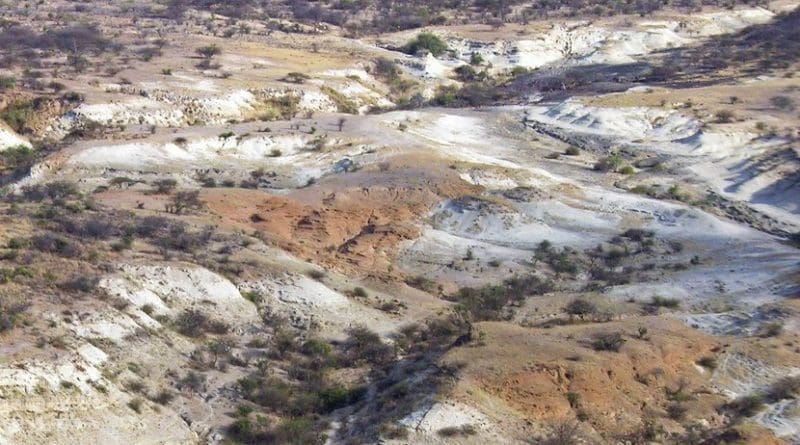New Understanding Of Kenyan Paleoenvironments Opens Window On Human Evolution In Area
Interest in human evolution has stimulated new geological work in the southern rift valley of Kenya. A new Geological Society of America Bulletin article by Anna K. Behrensmeyer and colleagues presents the results of more than 15 years of field research on complex strata representing the last 500 thousand years of geological history in an active rift system.
The sediments of the newly named Oltulelei Formation in the Olorgesailie Basin were deposited after a 180,000 year period of erosion and represent the time interval between ~320,000 and ~36,000 years ago. They preserve important evidence for human evolution, but “this only makes sense when we understand the geology of the enclosing rocks,” said lead author Behrensmeyer, “particularly the age of the strata and the nature of the paleoenvironments associated with archeological and fossil sites.” For example, if there are two archeological sites with different types of artifacts in different strata some distance apart, it takes geological investigation to say which is older and which is younger. “This is obviously critical to understanding the evolution of technology.”
Behrensmeyer used traditional section measuring and mapping to document the strata across three different sub-basins, then analyzed and correlated hundreds of section logs with the help of new computer-based methods. This research also involved intensive laboratory work using 40Ar/39Ar absolute dating (by coauthor Alan Deino) of the volcanic tephras to pin down the ages of the strata and the archeological sites. The team, including co-author (and Olorgesailie project leader) Richard Potts, then worked together to integrate the geology, the ages, and the archeological sites.
Behrensmeyer noted, “The synthesized result is a picture of geological change in which both tectonics and climate altered the East African landscape inhabited by early populations of our genus, Homo.”
The Olorgesailie rift basin was relatively stable for about 700,000 years, but then was divided into sub-basins and subject to rapid change over the last 500,000 years. This shift correlated in time with a transition from the Acheulean (“hand-axe”) technology to Middle Stone Age technology, along with other changes indicating that hominins were adapting to greater uncertainty in their environments.
This study also provides new, well-calibrated information on sedimentation in active rift settings as well as a three-dimensional, basin-scale geological history that can be integrated with emerging drill-core paleoclimate records from southern Kenya. The stratigraphic record preserved in the Oltulelei Formation advances understanding and poses new questions about how tectonics and climate interact to create different types of rift valley deposits.

